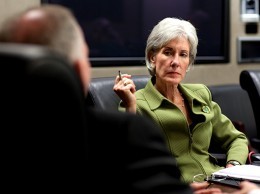Op/ed: Obamacare, and where we go from here
By Jim Wisdom
The early results are in for the Affordable Care Act. What are the results and who are the early winners and losers? More importantly, what should we expect in 2015 and beyond?
In California, 3.1 million people enrolled in a health-insurance plan through either Covered California, the state’s new health care exchange, or Medi-Cal. About 45 percent of those people, or 1.4 million, enrolled in Covered California, while the other 55 percent, or 1.9 million, enrolled in Medi-Cal. Of people enrolled in Covered California, 85 percent of enrollees paid their premium. Of these, 87 percent — or about 1 million — were given a subsidy to help lower their premiums. Based on preliminary data from California and the federal government, California’s enrollment results mirror national data from the federal government.
However, California’s early enrollment demographics appear to be somewhat less than favorable. Covered California projected that 40 percent of enrollees would come from the coveted 18- to 34-year-old age group. Only 29 percent enrolled from this age group. And, a new national study by Inovalon concludes that those enrolling in new plans under the health law are showing higher rates of serious health conditions. The likely result: An older, sicker population, which is likely to incur health care claims at a faster rate than expected.
The average national premium was $346 per month. The average subsidy was $264 per month, or 76 percent. Alternatively, the average Obamacare enrollee paid only $82 per month, or 24 percent of the premium.
What should we expect in 2015 and beyond? Most insurance professionals are hoping for the best but preparing for the worst.
According to insurance industry analyst Bob Laszewski, insurance companies will increase rates just under the 10 percent threshold that triggers a federal regulatory rate review. Part of the reason for this anticipated rate action is that the insurance industry will not have an adequate amount of claims data to properly analyze their new risk pools.
The large employer group market has not yet been subject to as much change as the individual and small-group markets. However, the employer mandate for groups of 50 or more employees is scheduled to take effect in 2015, unless it is postponed once again into a future year.
For individuals who were ineligible for subsidized coverage, many were adversely affected by smaller networks and prescription drug formularies, as well as higher deductibles, out-of-pocket maximums and premiums.
In 2015, the individual mandate penalty for not buying health insurance will increase to the greater of $325 or 2 percent of annual income, not to exceed $975. In 2016, this penalty increases once again to the greater of $695 or 2.5 percent of annual income, not to exceed $2,085.
The early winners are those with incomes low enough to be eligible for subsidies, those with pre-existing conditions, and the large number of individuals who are newly eligible for Medicaid. The early losers? The young and healthy, as well as most adults who are ineligible for subsidies.
“The working class and the middle class are not getting access to attractive benefits,” according to Laszewski. And a recent report by the Congressional Budget Office stated that by 2016, only 4 million out of 30 million uninsured Americans will pay an individual mandate penalty. The other 26 million will be exempted from the mandate due to various regulations issued by the Obama administration. The possible result? Tens of millions will remain without coverage.
“Obamacare looks to be on its way to creating a chronically uninsured class,” Laszewski said.
The Affordable Care Act has been a controversial law ever since its inception. The likelihood of its repeal is very remote.
Based on early results from the 2014 open enrollment period, it is likely to be even more controversial in the next few years. Why? Because the majority of its increased (unsubsidized) premiums, mandates, taxes and fees will fall squarely on unsubsidized individuals and employers — and many of them are middle-class voters.
• Jim Wisdom is president of Westlake Village-based James L. Wisdom Insurance Services.









